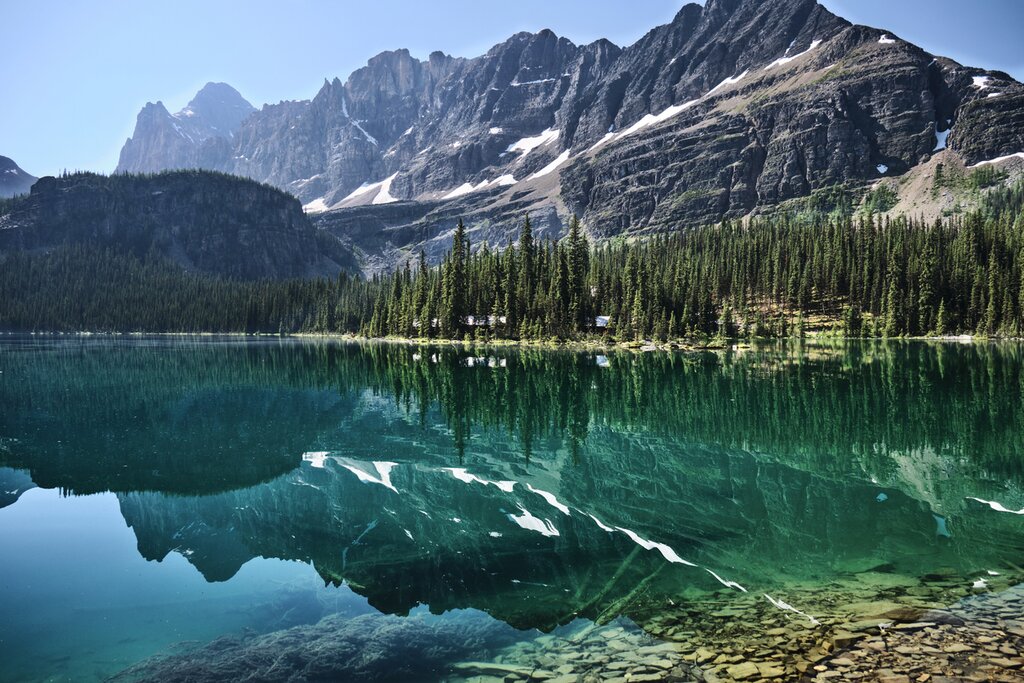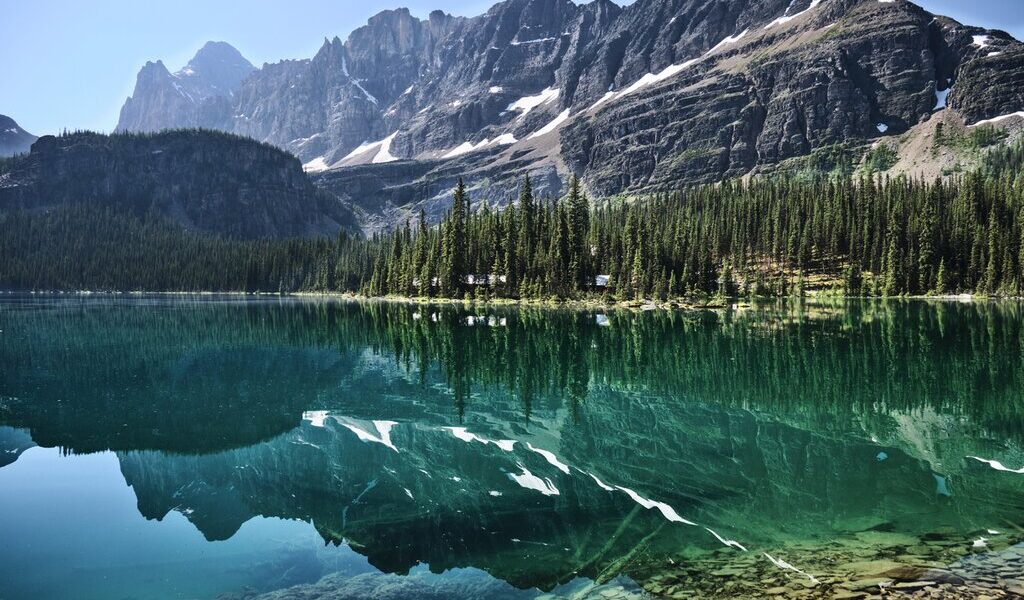
July is midsummer in British Columbia, but aside from a few popular locales, there’s not much of a tourist rush across the vast province. Head into the more remote areas to avoid those crowds, where you can learn about First Nations people, spot wildlife, hike and kayak in provincial and national parks, or relax in luxurious accommodations. Here are a few tips for visiting British Columbia in July.
British Columbia in July: A Comprehensive Travel Guide
## Weather in British Columbia during July
July in British Columbia marks the heart of summer, a season characterized by warm and generally pleasant weather, accompanied by extended daylight hours. However, it’s essential to recognize the significant climate variations that exist across this vast province, spanning from north to south and encompassing coastal regions to mountainous terrains. In general, during the summer months, inland areas tend to experience higher temperatures compared to the coastal regions. Yet, the inland areas also boast mountainous landscapes, providing opportunities to escape the heat by ascending to higher altitudes.
**Vancouver**, situated on the southwestern coast of British Columbia, enjoys a comfortably warm climate in July, without the extremes of excessive heat. The average minimum temperature in Vancouver during July is around 57°F (14°C), while the average maximum temperature reaches approximately 72°F (22°C). In contrast, inland areas, particularly those in the southern part of the province, can experience considerably warmer temperatures. For instance, **Kelowna**, located in the Okanagan Valley, has an average minimum temperature of 55°F (13°C) and an average maximum temperature of 82°F (28°C) in July. Even the northern regions of British Columbia experience a brief but enjoyable warm summer during this month. Take **Fort Nelson**, positioned in northeastern British Columbia and at approximately the same latitude as Juneau, Alaska, as an example. Fort Nelson sees a minimum temperature of 52°F (11°C) and a maximum of 73°F (23°C) during July. Therefore, regardless of where you decide to travel in British Columbia, it is important to pack layers of clothing to accommodate the changing climate.
## Crowds and Costs in British Columbia during July
July represents the peak summer season for travel to British Columbia, which naturally leads to increased tourism in certain areas. Consequently, some popular destinations such as **Whistler**, **Squamish**, certain towns situated on **Vancouver Island**, and gateway towns providing access to national and provincial parks, tend to become quite bustling with visitors. Despite the increased activity in these specific areas, the majority of the expansive province remains relatively tranquil. If you plan to visit these favored regions, which are generally located in the south and within a short distance from **Vancouver**, it is highly advisable to book your transportation and accommodation well in advance to secure your preferred options. While it is important to be aware of crowds during the summer months, consider traveling to British Columbia during the shoulder seasons to reduce costs and avoid overcrowded tourist attractions.
## Where to Go in British Columbia in July
Due to the higher concentration of visitors at popular summer tourist hotspots, July presents an excellent opportunity to explore the more remote and less-visited regions of British Columbia. While destinations like **Tofino** and **Victoria** on **Vancouver Island** tend to become crowded during the summer, there are other smaller towns on the island that offer more peaceful and relaxing getaways. Consider visiting **Port Hardy**, **Nanaimo**, or **Ucluelet** for a quieter island experience. Further north, the **Haida Gwaii Archipelago** (also known as the **Queen Charlotte Islands**) and the coastal **Great Bear Rainforest** offer stunning nature reserves that are particularly appealing during the summer months. These destinations allow you to experience unique ecosystems and encounter abundant wildlife without the presence of large crowds of other tourists.
On the opposite side of the province, **Yoho National Park** and **Kootenay National Park** provide a diverse range of adventurous and relaxing activities. The **Radium Hot Springs**, located at the edge of Kootenay National Park, offer soothing mineral waters that provide a refreshing experience after a hike or kayaking trip. Furthermore, other hot springs can be found in the geothermally active region, including locations such as **Kimberley**, **Nelson**, **Revelstoke**, and **Cranbrook**. This provides an opportunity to soak in the natural hot springs located across British Columbia.
## What to Do in British Columbia in July
To maximize your trip to the remote areas of British Columbia, consider staying at a historic luxury lodge. **Tweedsmuir Park Lodge**, situated in the **Tweedsmuir Provincial Park**, originally served as a fishing and hunting lodge in the 1920s. Today, it has been transformed into an eco-friendly wilderness retreat, offering a charming and rustic atmosphere combined with luxurious accommodations. Surrounded by dense forests, winding rivers, and deep glacier-carved fjords, this lodge provides a unique and immersive experience. Tweedsmuir Provincial Park is located on the eastern edge of the Great Bear Rainforest, nestled in the heart of the **Coast Mountains**, which represent the world’s largest expanse of coastal temperate rainforest. From the lodge, you can embark on various activities, including hiking, horseback riding, fishing, river tours, or even helicopter tours, allowing you to explore the stunning natural surroundings.
Delve into the rich cultural heritage of British Columbia’s First Nations by exploring the **Haida Gwaii Archipelago**. This archipelago boasts over 500 archaeological sites and villages where First Nations people continue to reside. Embark on hiking, kayaking, or sailing adventures around **Naikoon Provincial Park**, **Skidegate Inlet**, or **Gwaii Haanas National Park Reserve**, immersing yourself in the natural beauty and cultural significance of the area. Keep an eye out for abundant sea life, including seals, sea lions, porpoises, and whales, as you navigate the waters. The charming villages of **Skidegate** and **Queen Charlotte** provide scenic seaside lodging options, excellent restaurants, and access to various First Nations and wildlife tours, offering a well-rounded and enriching experience.
## Events in British Columbia during July
* **Canada Day**, celebrated **nationwide**. This national holiday, commemorating Canada’s birthday, takes place on July 1st and features fireworks displays and various festive events across the country. Be aware that accommodations may be fully booked, especially if the date falls on a long weekend for residents.
* **Crankworx**, held in **Whistler**. This renowned mountain biking competition and festival takes place on the slopes of the Whistler ski resort. Not only does it provide an exciting spectacle to witness some of the world’s best mountain bikers in action, but it also offers an opportunity for visitors to explore and enjoy some of Whistler’s renowned trails themselves.
* **Vancouver Folk Music Festival**, located in **Vancouver**. This long-standing folk music festival, held at Vancouver’s Jericho Beach Park, takes place during the third weekend in July. It is an opportunity to enjoy musical performances by local and international artists.
B-209

